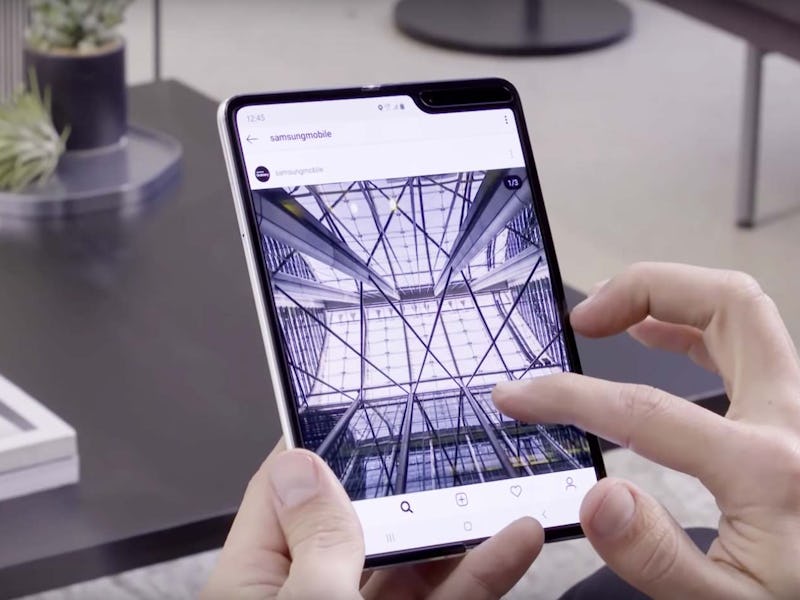The Samsung Galaxy Fold's Design Could Be Intrinsically Flawed: Here's Why
iFixit's teardown reveals potentially devastating flaws.

Samsung’s Galaxy Fold has hit some further snags. After a series of review units broke within a few days, the tech giant finally pushed back the foldable phone’s launch to a yet-to-be-determined date. Unfortunately for Fold pre-order customers, it could be a little while.
This is according to a recent tear-down revealing the $1,980 device’s internals by the site iFixIt. According to iFixIt, their analysis reveals an intrinsic flaw with a crucial component of its signature foldy screen. Tear-downs are obviously imperfect assessments, but iFixIt’s methods are particularly well-regarded.
So what’s the big problem? On Wednesday, iFixIt took apart the Galaxy Fold and found that the thin plastic film that covers its OLED screen is its Achilles heel. This is likely not news if you’ve been following the story — many of the broken units resulted directly from reviewers who instinctively peeled this protective layer off thinking it was removable. But the flaw goes beyond insufficient consumer warnings: iFixIt says that, even when it remains untouched, the screen protector doesn’t effectively prevent dust and dirt from slipping underneath it.
This small gap could spell doom for Samsung's Galaxy Fold.
The Galaxy Fold’s internal, tablet-sized screen is held together by two hinges that let it open and close like a booklet. This works pretty well in demos, but to achieve the fold, Samsung left a 7-millimeter gap in its inside bezels. That small opening leaves the delicate, light-emitting diodes that make up the touch screen vulnerable to debris. If anything manages to slip inside, iFixIt argues, the screen is doomed.
“This 7-mm gap doesn’t seem like a huge deal, but it leaves the display exposed,” states the iFixIt report. “Should something accidentally enter, it’s curtains for the screen.”
This compromise in its display is almost certainly what caused the screen bulges experienced by The Verge’s Dieter Bohn, tech reporter Michael Fisher, and German blog Blick. All three reviewers noted slight screen bumps, likely caused by dirt particles, that eventually led to dead pixels across the internal display.
The dust entryways don't stop at the screen.
The possible entryways for debris also don’t stop with the protective film. iFixIt was also able to slip plastic picks into small gaps surrounding the Fold’s spine. This could allow crumbs or lint from users’ pockets to eventually make its way into the OLED screen, leading to serious display damage.
Traditional smartphone designs protect their fragile OLED screens by encasing them with sturdy Gorilla Glass. Since devices like the Galaxy S10 and iPhone are simply a rectangular slab, phone engineers can easily and completely seal off its screen components. This kind of design leaves no weak points for screen damage caused by debris, but the Fold’s design requires there to be gaps in the bezels.
“It’s been a while since we’ve seen a phone with this many gaps, with the industry trending away from moving parts and towards sealed slabs,” stated the iFixit report. “It’ll be interesting to see how future folding designs overcome these weaknesses.”
The Galaxy Fold is undoubtedly an ambitious, first-generation gadget that many Samsung fans said they knew would be at least slightly flawed and yet proceeded to make pre-orders anyway. These fans were eager to be a part of the design process, and help guide the next era of smartphone design by getting these concepts out into the wild.
But in the race to be the first to bring the first foldable smartphone to market, Samsung might have gotten ahead of itself.